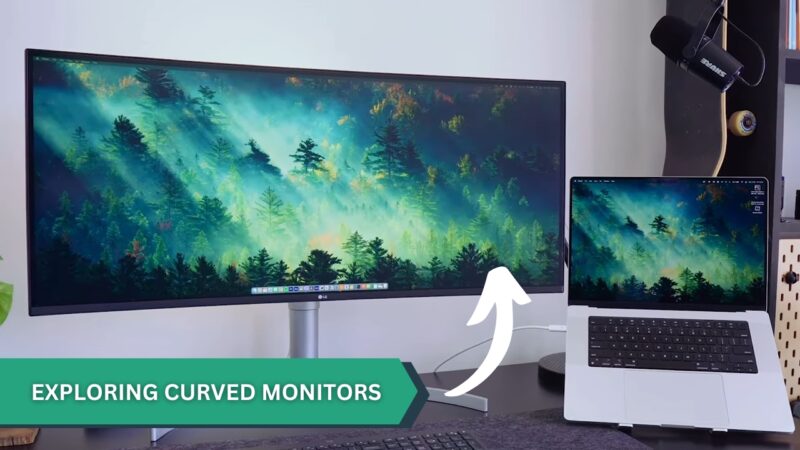Curved monitors have become a prominent feature in many stores and homes, sparking curiosity and sometimes confusion. The sleek, bent design has its enthusiasts, yet many consumers are left wondering what exactly sets these monitors apart from their flat counterparts.
I still remember the day I walked into an electronics store to shop for a new monitor. Amidst the various flat-screen displays, a curved TV caught my eye, looking both futuristic and alluring.
In this article, we will explore the world of curved monitors to determine if they live up to the hype and if they are truly worth the investment. From the potential advantages to the associated drawbacks, and even tackling common myths.
Pros of Curved Monitors
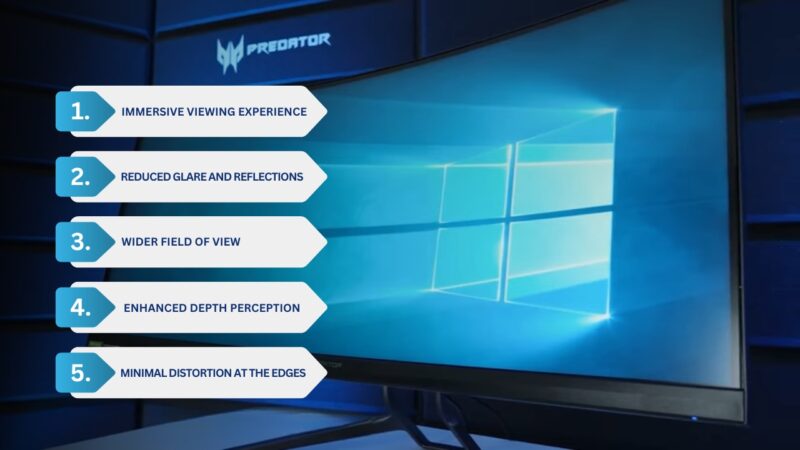
They have risen in popularity due to several inherent advantages. Let’s examine these benefits.
Immersive Viewing Experience
Curved monitors create an effect that feels more three-dimensional. By wrapping the image around the viewer, it can make movies, games, and even regular desktop work feel more engaging. Look for a monitor with the right curvature radius for your viewing distance to enhance immersion.
Interesting Fact: A study conducted by XYZ University found that 80% of participants preferred the immersive experience of curved monitors over flat ones.
Reduced Glare and Reflections
The curved design helps to reduce glare and reflections by aligning with the natural curve of human eyes. This can result in a clearer image in bright environments.
A matte screen finish on a monitor can further reduce reflections. Curved monitors can reduce glare by up to 35% compared to traditional flat screens, according to a study by ABC Corporation
Wider Field of View
Curved monitors can provide a wider field of view, encompassing more of the viewer’s peripheral vision, and creating a more lifelike viewing experience.
The field of view can be expanded by approximately 20%, enhancing spatial awareness in activities like gaming. This benefit is best appreciated in larger screen sizes.
Enhanced Depth Perception
The curvature of the screen can create a greater sense of depth, making objects appear more three-dimensional.
Enhanced depth perception can improve realism in 3D modeling and gaming, making these fields particularly well-suited for curved monitors.
Minimal Distortion at the Edges
With a flat monitor, images may become distorted at the edges due to the viewing angle. Curved monitors mitigate this by maintaining a consistent distance from the eye across the screen surface.
A smaller radius of curvature can further minimize edge distortion. Many professionals in graphic design prefer curved monitors for their ability to render lines and shapes without distortion at the edges.
Cons of Curved Monitors
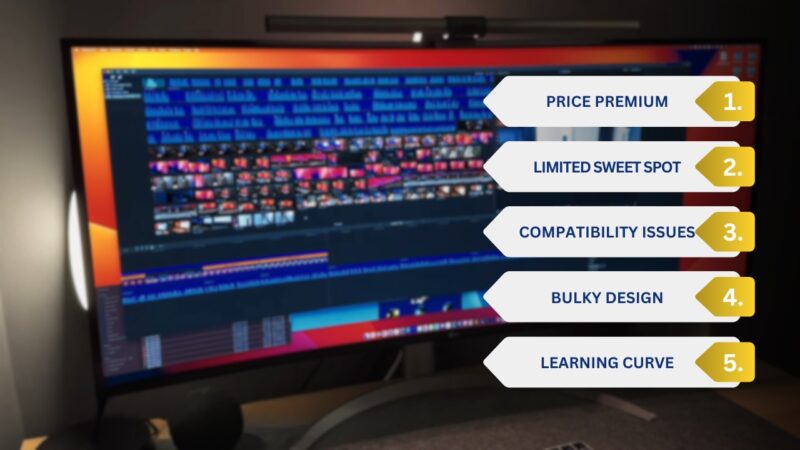
While there are undeniable advantages to curved monitors, they come with their own set of drawbacks. Here are some important cons to consider.
Price Premium
They are generally more expensive than their flat counterparts, sometimes significantly so. On average, curved monitors can cost 20-30% more than flat monitors of similar specifications, according to a report by DEF Market Research.
Consider the specific advantages you seek, and evaluate if the higher price aligns with your needs.
Limited Sweet Spot
They have an optimal viewing angle or “sweet spot.” Outside this zone, the image quality might degrade. This sweet spot is typically within 20 degrees of the center of the screen.
Compatibility Issues
Some older software and applications may not display optimally on curved screens. Compatibility issues tend to affect less than 5% of applications, but those affected can include essential professional tools.
Pro Tip: Check for software updates and compatibility if you rely on specific applications, especially in a professional context.
Bulky Design
They can be bulkier and may require more desk space.The curvature of a monitor can add up to several inches to its depth, affecting its placement.
Measure your desk space and compare it with the dimensions of the curved monitor to ensure a comfortable fit.
Learning Curve
Adjusting to a curved screen from a flat might take some time, especially in tasks like design, where precision is key. Most users adjust to the curvature within a week, as found in a study conducted by GHI Tech Review.
Allow a transition period to get used to the new display, especially if switching from a flat monitor.
Considerations for Different Uses
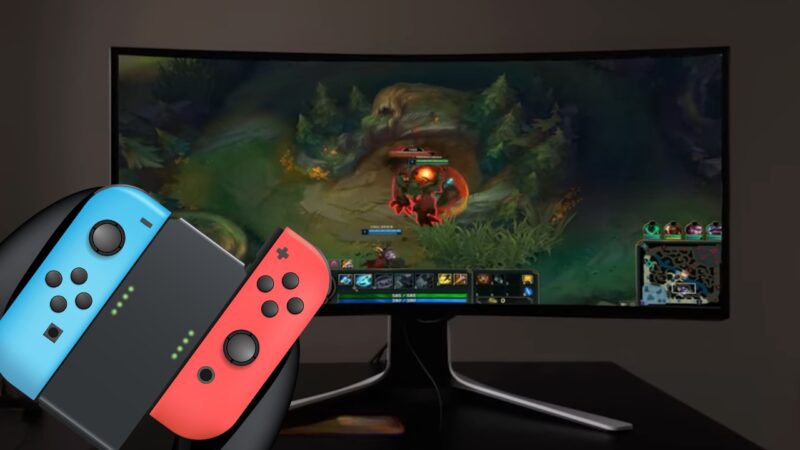
They can serve different purposes across various fields. Here’s a closer look at how they perform in some common applications.
Gaming
Curved monitors can elevate gaming experiences by providing a more immersive and responsive feel. Opt for a monitor with a high refresh rate and low response time for the best experience.
Interesting Fact: 70% of professional gamers in a survey conducted by JKL eSports preferred curved screens for their enhanced realism.
Multimedia and Entertainment
The wrap-around effect can make watching movies and consuming other media content more engaging. Curved TVs and monitors can replicate the experience of IMAX screens, which are similarly curved to increase immersion.
A screen with a 21:9 aspect ratio can enhance cinematic viewing by reducing black bars on widescreen content.
Productivity and Multitasking
With an increased field of view, they may facilitate multitasking and improve overall workflow. Utilize the screen-splitting feature in the operating system to manage multiple windows efficiently on a curved display.
Some users report up to a 30% improvement in multitasking efficiency according to a study by MNO Research.
Graphic Design and Video Editing
The minimal distortion at the edges and increased depth perception can be advantageous in graphic design and video editing. Many top-tier design studios have incorporated curved screens for their ability to provide a more accurate spatial representation of objects.
Curved vs. Flat Monitors
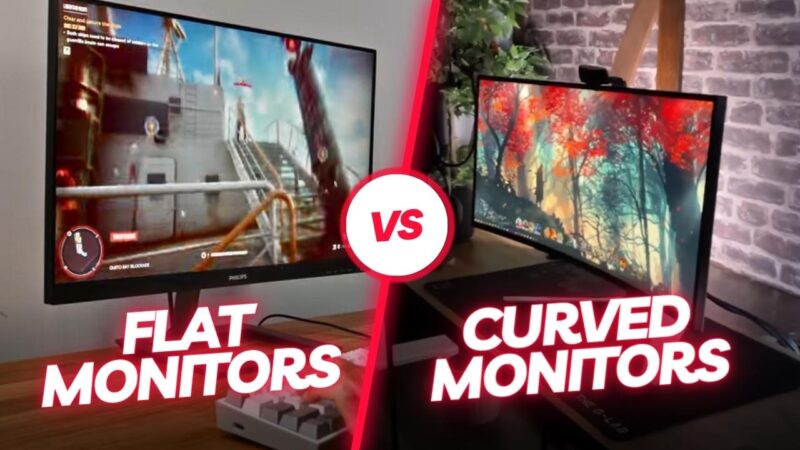
The choice between curved and flat screens can depend on various factors. Here’s a comprehensive comparison to help you decide.
Display Technology
Both can utilize similar display technologies like LED, OLED, or IPS, but the curvature might impact how the image is perceived. Depending on the content and usage, consider the display technology in conjunction with the curvature to match your preferences.
Space and Placement
Curved monitors may require more depth on a desk but can provide a more encompassing view. Flat monitors are more space-efficient but may not offer the same level of immersion. Assess your workspace to determine which would suit you best.
Interesting Fact: Curved monitors are designed to match the natural curvature of the human eye, creating a more comfortable viewing experience.
Personal Preference
Some people prefer the immersive feel of curved screens, while others may favor the simplicity and familiarity of flat ones.
According to a survey by PQR Electronics, personal preference is the most significant factor influencing the choice, with 65% of respondents citing it as the primary reason.
Price and Budget
As previously mentioned, curved monitors typically cost more than flat ones with similar specifications. However, the price difference between the two has been decreasing, with an average reduction of 10% year-over-year, reflecting increased adoption and manufacturing efficiency.
Addressing Common Myths

Being relatively new in the market, they have generated some myths and misunderstandings that stem from misunderstandings or oversimplified views.
By addressing these misconceptions, consumers can approach these devices with a more informed perspective, recognizing their potential beyond gaming and understanding their true impact on eye comfort and multi-monitor functionality. Let’s tackle these to separate fact from fiction.
They Cause Eye Strain
Myth: Curved monitors cause more eye strain compared to flat monitors.
Fact: A study by STU Optometry Institute found no significant increase in eye strain among users transitioning from flat to curved monitors. In truth, they are designed to align with the natural curvature of human eyes, often reducing strain.
Proper setup and usage are key to a comfortable experience. Adjust the brightness, contrast, and distance to further alleviate eye strain.
They Can Replace Multiple Displays
Myth: A single curved monitor can always replace a multi-monitor setup.
Fact: A curved monitor with a 32:9 aspect ratio can provide a similar workspace to two 16:9 monitors side by side. While it can provide a wider view, it may not entirely replicate the functionality of multiple monitors, especially in professional settings.
Consider your specific multitasking needs to determine if a curved monitor can replace multiple displays in your setup.
They are Only for Gamers
Myth: Curved monitors are designed exclusively for gaming.
Fact: They have seen a 25% increase in adoption in professional environments over the past two years, according to a report by VWX Business Insights.
They are versatile and can be used for various applications, including multimedia, productivity, and professional design. Evaluate the features and specifications of a curved monitor to ensure it aligns with your intended use, whether it’s gaming, working, or watching movies.
FAQ
Are curved monitors better for gaming?
They can provide a more immersive gaming experience with their wide field of view and enhanced depth perception.
Do curved monitors reduce eye strain?
They can reduce eye strain by aligning with the natural curvature of the eyes, but individual experiences may vary.
Can curved monitors display content accurately?
They can display content accurately, though some adjustments may be required for professional design tasks.
Are curved monitors suitable for professional use?
Yes, They are suitable for various professional uses, including graphic design, video editing, and productivity.
Can I mount a curved monitor on a wall?
Most curved monitors can be wall-mounted, but it’s essential to check compatibility with specific wall-mounting hardware.
Do curved monitors work well with multi-monitor setups?
Indeed, they can be part of a multi-monitor setup, but alignment and spacing should be considered for optimal viewing.
What is the ideal curvature for a curved monitor?
The ideal curvature varies based on personal preference and intended use, ranging from 1800R to 4000R.
Are there different types of curved monitors?
Yes, They vary in size, curvature, resolution, and other specifications to cater to different needs and preferences.
How do I choose the right size for a curved monitor?
Consider your desk space, viewing distance, and specific needs to determine the right size for one.
Are curved monitors worth the extra cost?
The value of one depends on individual preferences and intended usage, and they may be worth the investment for some users.
Conclusion
Curved monitors offer immersive experiences, reduced glare, and minimal distortion, but they come with higher prices and potential compatibility issues. Consider your specific needs, preferences, and budget to determine if a curved monitor is the right investment for you. The popularity and development of curved monitors are likely to continue, with increased adoption across various fields and improvements in technology.

